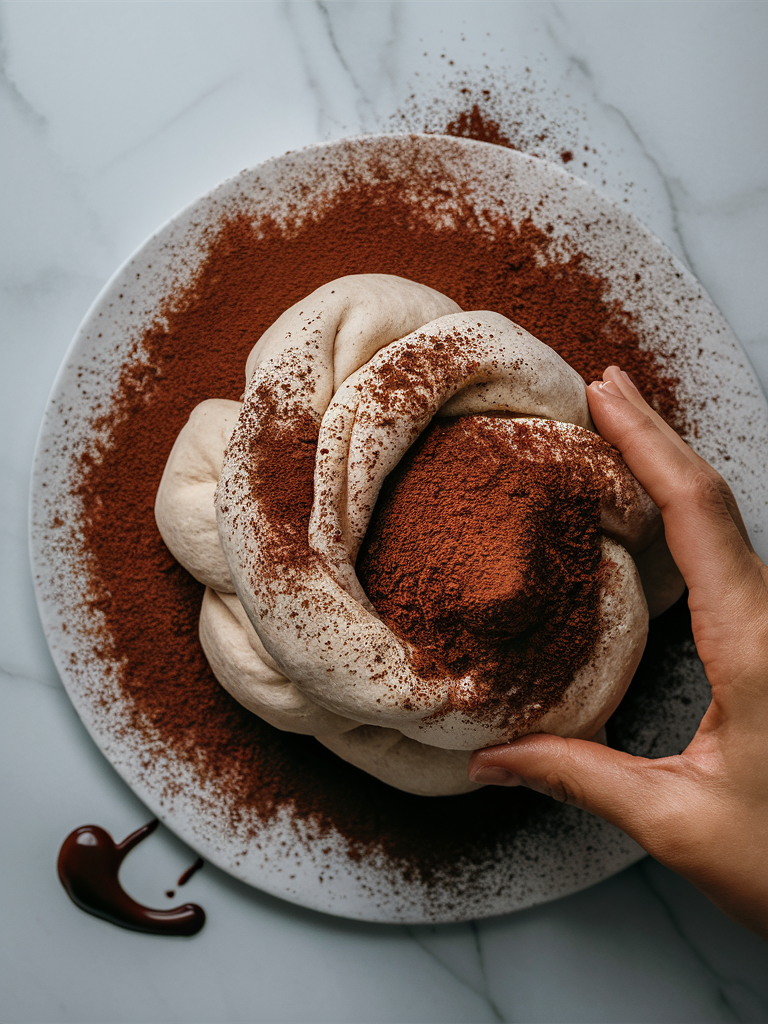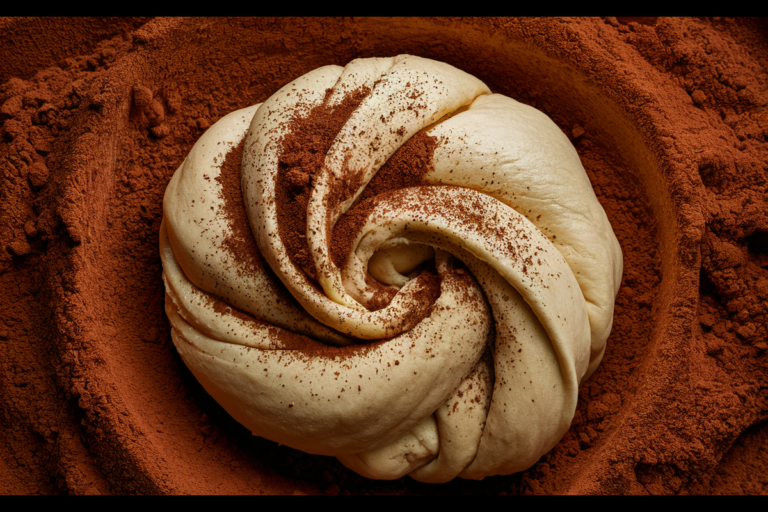Baking is as much science as it is art, where every ingredient plays a crucial role in determining the final product. When considering the interaction between cocoa powder and yeast, it’s essential to delve into both components to understand how they influence one another. Cocoa powder, derived from cacao beans, brings with it a complex array of flavors, textures, and chemical properties. Yeast, a microorganism responsible for making bread rise, reacts to its environment, where factors such as pH levels, moisture, and nutrients significantly impact its behavior.
In this article, we will explore whether cocoa powder affects yeast and how this interaction plays out in your baking. We’ll examine the science behind these ingredients, how they interact, and what adjustments might be necessary to achieve optimal baking results.
Understanding Cocoa Powder
Types of Cocoa Powder
Cocoa powder is available in two primary forms: natural cocoa powder and Dutch-processed cocoa powder. Natural cocoa powder is acidic and bitter, with a pH ranging between 5.3 and 5.8. On the other hand, Dutch-processed cocoa powder has been treated with an alkali to neutralize its acidity, giving it a milder flavor and a pH between 6.8 and 8.1. The choice of cocoa powder can influence how it interacts with other ingredients in your baking, especially yeast.
How Cocoa Powder is Made
Cocoa powder is produced by fermenting, drying, roasting, and grinding cacao beans. The resulting chocolate liquor is then pressed to remove cocoa butter, leaving behind the solids that are ground into cocoa powder. This process affects not only the flavor but also the acidity and fat content of the cocoa powder, both of which can impact yeast activity.
Nutritional Components of Cocoa Powder
Cocoa powder is rich in minerals like magnesium and iron, and it contains natural antioxidants known as flavonoids. However, its nutritional composition also includes small amounts of fat (from cocoa butter) and proteins, which may play a role in how yeast behaves when mixed into doughs or batters.
Use this link when mentioning adjustments in bread recipes to balance flavors or moisture.
Understanding Yeast
Types of Yeast in Baking
Yeast comes in several forms, including active dry yeast, instant yeast, and fresh yeast. Each type has specific hydration and activation requirements, but all forms of yeast function by consuming sugars and producing carbon dioxide and alcohol, which cause dough to rise. The interaction between yeast and other ingredients, such as cocoa powder, can vary depending on the type of yeast used.
The Role of Yeast in Dough
Yeast is crucial for leavening bread and other baked goods. As yeast ferments, it produces carbon dioxide, which gets trapped in the dough’s gluten network, causing it to expand and rise. The fermentation process also contributes to the development of flavor and texture in the final product.
Optimal Conditions for Yeast Growth
Yeast thrives in a warm, moist environment with a steady supply of sugars. The pH level of the dough, the presence of fats, and other factors can either promote or hinder yeast activity. Understanding these conditions is key to predicting how yeast will interact with cocoa powder.
How Cocoa Powder Interacts with Yeast
Cocoa Powder’s Acidity and Its Effects
Cocoa powder, particularly the natural variety, is acidic. This acidity can lower the pH of the dough, potentially affecting yeast activity. Yeast prefers a slightly acidic to neutral environment (around pH 4.5-6), so an overly acidic dough might slow down yeast fermentation. Dutch-processed cocoa, being less acidic, might be less likely to affect yeast activity.
The Role of Fats in Cocoa Powder
Cocoa powder contains small amounts of cocoa butter, a fat that can influence the texture and rise of dough. Fats can coat the flour’s proteins, inhibiting gluten formation, which may result in a denser, less elastic dough. This can impact how well the dough rises and the final texture of the baked product.
Influence of Cocoa on Dough Rise
When cocoa powder is added to dough, it can alter the dough’s consistency, moisture absorption, and gluten development. The presence of fats and the change in pH may lead to a slower rise, necessitating adjustments in the recipe, such as increasing the yeast amount or adjusting rising times.

Cocoa Powder’s Acidity
The pH Levels of Cocoa Powder
Natural cocoa powder has a pH level that is typically below 6, making it quite acidic. This acidity can lower the pH of the dough when cocoa is added, affecting the yeast’s performance. In contrast, Dutch-processed cocoa has a more neutral pH, which is less likely to interfere with yeast activity.
How pH Affects Yeast Activity
Yeast is most active in a pH range of 4.5 to 6. If the dough becomes too acidic, yeast activity can slow down, leading to a longer fermentation time and potentially denser bread. When using natural cocoa powder, it’s essential to balance the dough’s acidity, perhaps by adding a bit more sugar or a pinch of baking soda to neutralize the acidity.
The Impact of Cocoa Butter
Understanding Cocoa Butter Content
Cocoa butter is the fat component of the cocoa bean and is present in varying amounts in cocoa powder. The fat content can affect how the dough handles and rises. While small amounts of fat can make dough tender, too much can interfere with gluten formation and yeast activity.
How Fats Interact with Yeast
Fats like cocoa butter can create a more tender crumb in bread but can also inhibit the rise by coating the flour particles and preventing gluten from forming a strong network. This effect might require adjustments to the dough, such as increasing the kneading time or the amount of yeast.
Use this link when mentioning adjustments in bread recipes to balance flavors or moisture.
Cocoa Powder and Dough Texture
Impact on Gluten Development
Gluten is the protein in flour that gives dough its elasticity and structure. Cocoa powder, due to its fat content, can inhibit gluten development, leading to a less elastic dough that doesn’t rise as well. This can result in a denser, chewier bread or cake.
How Cocoa Affects Dough Elasticity
The addition of cocoa powder can make dough stiffer and less stretchy, which may affect the dough’s ability to rise properly. This is particularly true for recipes that rely heavily on gluten development, such as breads and certain types of cakes.
Flavor Profiles with Cocoa Powder
The Bitterness of Cocoa
Cocoa powder, especially in its natural form, has a bitter taste due to its acidity and flavonoid content. This bitterness can be a desirable flavor in some recipes but may require balancing with sweeteners or other flavoring agents when baking with yeast.
How Cocoa Influences the Final Flavor
Adding cocoa powder to yeast-based recipes can impart a rich, chocolatey flavor. However, the bitterness of cocoa may also mask the subtle flavors developed during yeast fermentation, so it’s important to balance the ingredients carefully.
Adjusting Recipes with Cocoa Powder
Balancing Acidity and Sugar
When using natural cocoa powder, you might need to increase the sugar content slightly to balance the acidity and bitterness. Additionally, consider adding a small amount of baking soda to neutralize the cocoa’s acidity, helping to maintain an optimal pH for yeast activity.
Modifying Yeast Amounts
Given that cocoa powder can slow down yeast activity, you may need to increase the amount of yeast in your recipe to compensate. Alternatively, you could allow the dough to rise for a longer period to achieve the desired volume.
Cocoa’s Impact on Rising Time
The inclusion of cocoa powder in dough can slow down the fermentation process, requiring a longer rising time. Monitoring the dough closely and allowing extra time for proofing can help ensure that the final product is light and airy.
Common Baking Mistakes with Cocoa
Overcoming Density Issues
One common issue when baking with cocoa powder and yeast is ending up with dense, heavy bread. This can be due to the inhibited gluten development caused by the fats in cocoa powder. To counteract this, you can try increasing the kneading time, adding vital wheat gluten, or adjusting the hydration level of the dough.
Avoiding Flat Breads
Another challenge is that the bread might not rise as much as expected, resulting in a flat, dense loaf. This can happen if the cocoa powder lowers the pH too much or if there’s not enough yeast. To avoid this, ensure your dough is well-hydrated and consider using a dough enhancer or a bit more yeast.
Cocoa Powder in Bread Recipes
Best Bread Recipes with Cocoa
Cocoa powder can be a delicious addition to many bread recipes, particularly those that are slightly sweet or have complementary flavors, such as cinnamon, nuts, or dried fruits. Some popular bread recipes that include cocoa powder are chocolate babka, cocoa sourdough, and chocolate chip brioche.
Integrating Cocoa into Traditional Bread
While cocoa powder is typically associated with sweet bread, it can also add depth to more savory breads, such as pumpernickel or rye. The key is to balance the flavors so that the cocoa doesn’t overwhelm the other ingredients.
Sweet vs. Bitter: Cocoa’s Role
How Sweet Cocoa Affects Yeast
Using a sweeter, less acidic cocoa powder can be easier when baking with yeast since it won’t affect the pH as much. However, sweetened cocoa powder typically contains sugar, so you’ll need to adjust the recipe to account for the added sweetness.
Bitter Cocoa and Its Baking Challenges
Bitter, natural cocoa powder can present more of a challenge due to its acidity. When using this type of cocoa, pay close attention to the dough’s consistency and be prepared to make adjustments, such as adding more yeast or sweeteners.
Expert Tips for Baking with Cocoa
Best Practices
When incorporating cocoa powder into yeast-based recipes, it’s important to start with a small amount and gradually increase it as you experiment. Be mindful of the type of cocoa powder you’re using, as natural and Dutch-processed cocoas will behave differently in the dough.
Common Adjustments
To achieve the best results, you may need to adjust the amount of yeast, sugar, and liquid in your recipe. Adding a pinch of baking soda can help neutralize the acidity of natural cocoa powder, while a longer kneading time can improve gluten development.
How to Achieve Perfect Dough Rise
To ensure a good rise when baking with cocoa powder, keep your dough warm and well-hydrated. Consider using a pre-ferment or a dough enhancer to give the yeast a boost. Also, remember to allow enough time for the dough to rise fully before baking.
Frequently Asked Questions
Does cocoa powder inhibit yeast growth?
Cocoa powder can inhibit yeast growth due to its acidity and fat content, which may slow down the fermentation process.
Can I use cocoa powder in any yeast-based recipe?
Yes, you can, but you may need to adjust the recipe to ensure proper rise and flavor balance.
How do I balance the bitterness of cocoa powder in bread?
Adding more sugar or using a less acidic cocoa powder like Dutch-processed cocoa can help balance the bitterness.
Will cocoa powder affect the texture of my bread?
Yes, cocoa powder can make the dough denser and less elastic, so you may need to adjust the kneading time or hydration level.
Can I substitute natural cocoa powder with Dutch-processed cocoa in bread?
Yes, but remember that Dutch-processed cocoa has a more neutral pH, so it may not require the same adjustments as natural cocoa powder.
How much cocoa powder can I add to bread dough?
Start with a small amount, such as 2-3 tablespoons per loaf, and adjust based on your taste and the dough’s behavior.
Conclusion
The interaction between cocoa powder and yeast in baking is a complex but fascinating topic. While cocoa powder does affect yeast activity, the outcome largely depends on the type of cocoa used and how you adjust your recipe. By understanding the science behind these ingredients and making thoughtful adjustments, you can successfully incorporate cocoa powder into your yeast-based recipes to create delicious, chocolatey bread with the perfect rise and texture.

